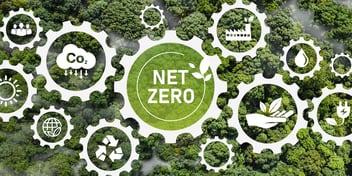Demonstrating how dairy can be carbon neutral
The dairy industry is notoriously water and energy-intensive. A new blueprint shows how the dairy plant of the future can have zero environmental footprint.
A New Zealand water engineer has explained how the country's dairy industry is moving towards plant production with a fully integrated approach to the recovery of water, nutrients, energy and waste streams.
Dairy factories use an intense amount of water, extracted from the local environment or the ground to use for processing. A typical day in peak season will see a dairy farm use around 17,000 cubic metres of water per day, and discharge around 12,000 cubic metres of water per day.
“There is also a lot of thermal energy that's required, because you drive a lot of that existing liquid to create these products,” said Richard Green, principal consulting engineer with Jacobs New Zealand. “The water with chemicals is flushed through dairy pipes in the factory. Then a lot of that water is sent off as wastewater and disposed of. This huge amount of water that's treated is discharged into rivers, oceans or discharged back on to the land. It has put quite significant pressure on the environment.”
Recycling technologies
The zero-liquid discharge model takes a circular approach. Reverse osmosis plants are used in some plants around the world, which produce a water reuse stream which is put back into the production in some form. This usually produces solid waste material that can be used as fertiliser.
“It has evolved through common technologies like reverse osmosis, ultrafiltration, evaporation, and crystallisation processes. The next step is to take that zero-liquid discharge into a product contact situation, which would require further odour removal, further disinfection and mineral dosing requirements and effectively making that treated water to a drinkable standard so it can be used in the product contact situation,” he said.
Green added that there are a number of other technologies and processes that are shaking up this traditional linear approach processing in dairy plants. On top of liquid inputs, there are solids and energy inputs that need to be considered.
“One of the things we’ve looked at is the use of a resource recovery facility, is making use of wastewater and combining that with potential hydrogen technology,” he explained. “That is where we can take the wastewater, treat it, and then run it through some sort of technology to produce hydrogen, which could effectively be reused back as an energy source for the dairy industry.”
Oxygen is then a byproduct which can go back into the wastewater as a treatment, which not only helps to recycle the water but saves energy resources in doing so. The hydrogen could also be used to power vehicles, with the dairy industry relying on a large transport fleet for its products.
The next step
In order to get to a zero environmental footprint dairy treatment plant, Green says that there’s still a few issues that need to be tackled.
“First of all, some of that hydrogen electrolysis technology is still very new. One of the things would need to be worked on is trying to get that cost of that technology down,” he said.
The technology is not yet able to compete with coal, particularly in New Zealand where the cost is relatively low. However, Green is optimistic that hurdles to a circular zero environmental footprint dairy plant can be overcome.
“It’s achievable. It’s a long term goal and a long term step that the industry needs to take,” he said.

